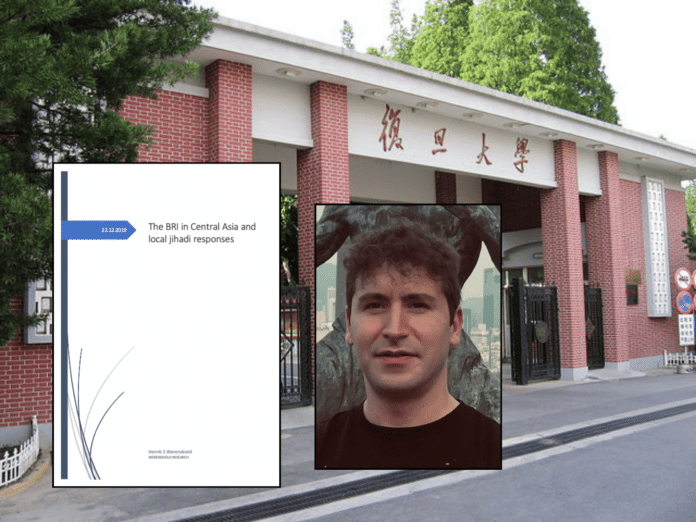Her er rapporten som geopolitika-redaktør Henrik S. Werenskiold skrev på oppdrag for spionsiktede Ciwan M. Can i 2019 publisert i sin helhet.
I 2019 tok Can kontakt med Werenskiold og hadde en forespørsel om Werenskiold, som da var utenriksjournalist for Resett, var interessert å skrive en forskningsrapport om fremveksten av jihadisme i Sentral-Asia konteksten Belte-og-vei-initiativet i regi av Fudan University. Werenskiold mottok en mindre sum penger for oppdraget.
Det har vært mye snakk om den nevnte rapporten, så Geopolitika har besluttet å publisere originalversjonen på engelsk i sin helhet. Det er viktig å ta i betraktning at rapporten ble bestilt i august 2019 og ferdigskrevet og innlevert 22. desember 2019.
Kort fortalt spår rapporten at amerikanerne ville lide et nederlag i Afghanistan og at Taliban ville komme til makten igjen, men også at Islamsk stat i Afghanistan ville bli sterkere, og at det ville være en konflikt mellom gruppene. I denne «jihadistborgerkrigen», anbefalte rapporten Kina å støtte førstnevnte, fordi bevegelsen ville være mer opptatt av å konsolidere sin makt innenfor Afghanistans grenser enn å angripe kinesiske interesser i Sentral-Asia, i motsetning til sistnevnte, som har et mer globalt perspektiv.
Les også: Kinas forsiktige dans med Taliban: Balansegang mellom risiko og muligheter 🔒
The BRI in Central Asia and local jihadi responses
Table of Contents
The Belt and Road Initiative and the future of Central Asia. 3
Jihadism in the “Five Stans”. 11
Three Central Asian jihadi waves 17
Idlib – heartland Central Asian jihad in Syria. 19
The resurging jihadi threat 24
The Central Asian Connection. 26
The Fight for Afghan Jihadi Throne. 26
The perfect jihadi storm and the BRI 34
Abstract
China’s Belt and Road Initiative (BRI) is upending the economic and security dynamics in Central Asia. As Salafi-jihadism is still gaining traction in the region, local jihadists and terrorist groups will increasingly see BRI-projects as tempting targets for terrorist attacks. How they will respond is closely linked to the security situation in neighboring Afghanistan and how the current “civil war” in the international jihadi movement will evolve moving forward.
The Belt and Road Initiative and the future of Central Asia
Introduction
The Belt and Road Initiative (BRI) was initiated by President Xi Jinping in 2013 and aims to economically integrate Eurasia – connecting China to Europe through Central Asia – by developing infrastructure, transport, energy, industry, telecommunication and promoting economic and cultural exchanges. So far Chinese companies have invested approximately 136.5 billion USD in Central Asia through various BRI-projects,[i] a figure that is bound to increase further in the future. Central Asian states are thus increasingly dependent on trade with China for economic development through the BRI moving forward, a trend that is only expected to accelerate. Increased commercial interconnectivity between Central Asia and China – by means of massive Chinese-led infrastructure and industrial projects – has already led to a more visible presence of Chinese citizens and commercial assets throughout the region – a development that is also expected to continue.
Local reactions
China’s newfound interest in the region will have political repercussions on the ground, which can accentuate a relatively unfavorable perception vis-à-vis China among the local populace. Central Asian societies already have long-standing apprehensions about their large powerful Chinese neighbor, as centuries-old local epics present China as a recurrent enemy of Central Asian Turkic peoples, and as an historical opponent of Islam in particular.[ii] In fact, China’s economic inroads into the region is already increasingly spurring anti-Chinese sentiment among the local population: “Chinese have become, in part, a scapegoat for local grievances – economic and employment woes – and a focal point for sensitive cross-border issues such as the oppressive treatment of Muslim minorities in China and accusations of debt-trap diplomacy.”[iii] The controversies surrounding the reeducation programs of the Uyghur Muslims – a Turkic people with religious and kinship ties to Central Asians – in China’s Xinjiang province, have amplified these views and will continue to do.[iv]
There are reasons to believe that this unfavorable perception of China will become more acute in the times ahead. Perceived economic injustices linked to Chinese-led BRI development projects in the region – often co-sponsored by unpopular Central Asian governments – can augment local grievances. Not only has BRI-projects the potential to bring about more animosity towards China among Central Asians in general, but more importantly among region’s Islamists and jihadi terrorists. These people likely want to defend their local cultural and pan-Islamic identity from what they perceive as increasing influence from “Chinese apostates.”
Security
The security dimension of these infrastructure projects is thus a subject of growing importance for Beijing. In the short- and medium term, in terms of securing BRI construction sites and personnel; and in the long term, with regards to the protection of finished infrastructure and industry projects.[v] The most pertinent and obvious security threat to BRI in Central Asia is the growing presence of international jihadi-Salafi terrorist groups, such as al-Qaeda and Islamic State – and their many affiliates and subgroups – across the wider region. Hitherto, China has not been high in the enemy hierarchy of the international jihadis, but the dynamics of the BRI might change this moving forward. If Chinese economic assets continue to become more visible and accessible in the region, they become increasingly vulnerable, and can thus be tempting targets for jihadi terrorist attacks.[vi] Indeed, because of growing of Chinese economic interests the region, China has already been identified as an increasingly important target for international jihadists – with security and political risks particularly in Uzbekistan, Tajikistan, Kyrgyzstan and Afghanistan.[vii]
Chinese infrastructure projects will thus increasingly be seen as prime “soft” targets for the region’s myriad terrorist groups, compared to the harder to hit “hard” security targets of the Central Asian states’ security apparatuses. The policy tool box for China to tackle this dilemma in the current policy environment is limited, due its commitment to the “principle of non-interference in the internal affairs of sovereign countries.” Beijing’s seemingly only solution for time being is to train and equip local security forces, or possibly rely on private security for protection.[viii]
Central Asian Jihad
History
Salafi jihadism became increasingly popular among Central Asians not only as a consequence of the military success of the mujahedeen against the Red Army in the Soviet-Afghan War, but also due to the collapse of the Soviet Union itself – which caused a massive security vacuum in the region. Numerous Salafi groups – such as Hizb-ul-Tahrir – from outside the region are believed to have sent missionaries to Central Asia in the chaos the ensued in order to spread their intolerant version of Islam.[ix] Central Asian were thus radicalized by Arab preachers and local theologians who were educated in Salafi madrassas from across the Middle East. As Salafist ideology gained a foothold and started to gain traction in the region, the first Central-Asian militant jihadists first appeared in the late 1980s and early 1990s,[x] as armed insurgencies against the “infidel” governments of China and Kazakhstan. The radicalization of the conflict between the Uyghurs and the Chinese central government dates back to April 1990, when Uyghurs massively protest in Akto District to denounce Chinese authorities’ refusal to authorize the construction of a mosque.[xi]
The terrorist groups the East Turkestan Islamic Movement (ETIM) and the Islamic Movement of Uzbekistan (IMU) were founded in 1988 in Xinjiang and in 1998 in Tajikistan respectively. The first recorded Salafi-jihadi terrorist attack in the Central Asia was perpetrated by IMU and took place the Uzbek capital Tashkent in 1999, according to the Global Terrorism Database.[xii] Since 1999, the movement, based in Tajikistan, has carried out terror numerous terror attacks against governments and civilians throughout the region – including Uzbekistan, Kyrgyzstan, and Tajikistan. However, after international pressure was applied on the Tajik government, IMU was eventually expelled from the country and rebased in Afghanistan (and later in Pakistan)[xiii] – where they were free to follow their jihadi convictions. Militants quickly came in contact with fellow jihadists in al-Qaida and Taliban, from whom they gained valuable knowledge in terrorism and the art of asymmetric warfare. IMU decided early on to ally with – and fight for – the Taliban in their battle against the Northern League. IMU jihadists were later important contributing factors in the Taliban’s war against the Afghan government and NATO forces. After incurring heavy losses from Western forces, the group relocated their main base of operations to Waziristan, in Pakistan’s Federally Administrated Tribal Areas (FATA)-region.[xiv] Furthermore, the islamo-nationalist Uyghur terrorists in Turkestan Islamic Party (formerly ETIM) – native to China’s Xinjiang province – are present and connected to other jihadi networks in Central and South-East Asia, on the Pakistan-Afghanistan border, as well as in Turkey and Syria.[xv]
As the international jihadist scene increasingly gained traction throughout the 2000s, several other al-Qaida-linked Salafi-jihadi groups emerged in the region, including Jamaat Ansarullah (Society of the Partisans of Allah), Islamic Jihad Renaissance Party, Islamic Movement of Tajikistan, Islamic Movement of Gulmorad Halimov in Tajikistan.
The illegitimate states
Roughly in the course of the two last decades, Islamist radicals from the five Central Asian nations – Kazakhstan, Kyrgyzstan, Tajikistan, Turkmenistan and Uzbekistan – have increasingly become noteworthy players on the field of international terrorism. Police and security sources in Central Asia; Central Asian scholars; jihadi sources in the Middle East, Afghanistan, and Pakistan; sources in different Central Asian organizations linked to either Al-Qaeda or Islamic State in the Middle East and Afghanistan; Taliban and NGO sources in Afghanistan and Central Asia; local sources among the population of Kyrgyzstan and Tajikistan; and the think than International Crisis Group, all portray a picture of spreading jihadism in Central Asia.[xvi]
Terrorism in Central Asia is related to the state in a number of ways, as the attraction of jihadism can be understood as a spiritual search for an ideal state and the fulfilment of a mission to make that ideal come true.[xvii] As their brethren from across the Islamic world, Central Asians Salafi-jihadist are firm believers in the principle of Takfirism – the labelling of other non-Salafi Muslims as heretics. They have thus deemed the governments of the five Central Asian states – The Stans – as illegitimate, and declared Islamic holy war on them – jihad – aiming to replace them with rulers will stay true to Islamic Law knows as – shari’a – and incorporate the region in a larger global Islamic caliphate when the time is ripe. Central Asian jihadists thus see their native states as one of their main enemies, causing state officials to be considered legitimate targets in the quest to reestablish the Islamic caliphate.[xviii]
New Jihadi Wave
In recent years, Central Asians have made the headlines as citizens from the region have been involved in a series of high-profile terrorist attacks across Europe and the United States – including New York, Stockholm, Istanbul and St. Petersburg.[xix] However, despite a prevailing narrative in Western media that the region is becoming a hotspot of Islamist terrorism, the claims of the spread of jihadism within Central Asia itself are overstated and the threat still remains limited in scope. According to figures from local authorities, only 19 terrorist attacks – killing 141 people – have been perpetrated by Islamist terrorists between 2008-2019 in the region. Almost all of the attacks targeted law enforcement agencies – the security services, police, or the army – rather than civilians. This is clearly reflected in the fatality counts: 80 representatives of the state, 11 civilians and 50 attackers. Most of the attacks have been perpetrated by jihadi terrorists from within the region, but not all.
There has nevertheless been a noticeable surge in attacks since 2015, including two armed raids in Kazakhstan in 2016; and several incidents in Kyrgyzstan in 2015 and 2016, which caused the death of many several people in the security apparatus. Many other terror plots have failed since 2015: In Tajikistan, more than a handful terrorist attacks of a specular nature – many of which orchestrated by the Islamic State – have been thwarted by local security services; in Kyrgyzstan, several terrorist plots – have been averted according to local security sources; in Kazakhstan, a total of 12 plots have been foiled in 2016. The number of Central Asian citizens convicted for terrorism-related offenses has also been on the rise since 2016,[xx] while prison inmates are becoming more prone to jihadist ideology and radicalization. In November 2018, for example, IS reportedly claimed responsibility for a prison riot in Tajikistan that left at least 23 individuals dead.[xxi]
Thousands of radicals from Central Asia have traveled to Syria and Iraq to fight for al-Qaida and IS, and hundreds of Central Asian militants are currently in Afghanistan.[xxii] Most Central Asian fighters are radicalized outside the region, most notably in Russia, which is a major destination for Central Asian migrant workers, where they face economic and social challenges, and suffer from marginalization. Turkey – where potential fighters enjoy a visa-free regime – is also an important arena for jihadi radicalization. Assistance of ethnic diasporas, a shared Islamic culture, and finally, closeness to Syria and easiness of joining various jihadist organizations, drive Central Asian citizens in the country towards radicalization.[xxiii]
Early stage
Despite all the available information, carrying out research on Central Asian jihadist organizations is difficult, since these groups are still in a relatively early stage of development.[xxiv] It’s nevertheless still possible to make some general observations about why Central Asians join terrorist groups. Research has indicated that poverty, lack of education and high levels of religiosity do not necessarily correlate with susceptibility to jihadi radicalization. Conversely, many recruits are better off financially and better educated than the average person in Central Asia. Furthermore, researchers have documented that people engaged in a culture of violence – crime, combat, violent sports or some combination of these – are more susceptible to radicalization than others. Myriad other reasons include disillusionment or de-socialization due to unfulfilled aspirations; a sense of injustice; disengagement from social support networks; a diminished sense of self-worth; or some combination of these factors.[xxv] There are many jihadi propaganda-videos produced for recruitment in militants groups that are directed towards a Central Asian audience – across Central Asia, Afghanistan, Iraq and Syria – and drive them towards radicalization.[xxvi] Quantitatively, relative to the region’s population, the available data suggest that Central Asia as a whole accounts for a disproportionately high percentage of foreign fighters in Syria and Iraq, but a disproportionately low number of terrorist attacks worldwide.[xxvii] Between 2008 and 2017, Central Asians accounted for 68 of the 48,546 (0.14 percent) jihadi-related terrorist attacks recorded in the Global Terrorism Database (GTD), excluding incidents in Syria, Iraq and Afghanistan.[xxviii]
Jihadism in the “Five Stans”
The stronghold of jihadism in Central Asia is the notorious Ferghana Valley, divided between Uzbekistan, Kyrgyzstan and Tajikistan, but mainly inhabited by ethnic Uzbeks. Over the past two decades, due to harsh responses at home, the locus of Central Asian radicals has moved from the Ferghana Valley, through Afghanistan into the tribal badlands of Pakistan, and ultimately towards the Levant. Close geographical proximity to Afghanistan and Pakistan has allowed local jihadists remaining in Central Asia to survive, receive support, and communicate with international counterparts. It has also permitted foreign jihadi organizations to enter and operate inside the region, in coordination with local networks.
An important factor for the emergence of Salafi-jihadism in the region, is the weak identification with nationhood ideologies, which enjoy limited public resonance, especially among minorities. The closed borders and disputes that replaced free interaction of the Soviet era likely makes a vision of a united Muslim community appealing. As such, being a religious puritan and associated with distinct Islamic looks and lifestyle has become fashionable among Central Asian youth. The increased visibility of Islamic beards and hijabs across the region, attests to a renaissance of Islamic traditions among general population. While criminal gang culture was fashionable in the 1990s, Islamic austerity replaced it in the new century.[xxix] Central Asian governments increasingly view the trend as political Islam’s inroad into their region, so they have actively been trying to limit the prominence of Islamic attire in the public space – which they equate with susceptibility to Islamist radicalism – albeit with different policies and with a varying degree of success.[xxx]
Overt Salafi-jihadism still remains limited in scope in Central-Asia as just 0.005 percent of the region’s population has joined terrorist groups,[xxxi] but the potential for further growth within the region is nevertheless substantial. Research has for example put the social basis prone to radicalization in Tajikistan to about 6-7% of population – a very significant number. Islamic State and al-Qaida had by early 2017 roughly comparable constituencies among the Central Asian jihadists, contrary to inside Central Asia and Afghanistan where IS was already predominant.[xxxii]
All the five Central Asian states see some of their citizens, albeit to a varying degree, being driven towards jihadism despite differences in their political systems, governance practices and levels of economic development. The governments of the “Stans” has suppressed, and continue to suppress, the activities of more than twenty Islamic groups that are recognized by the court as extremist or terrorist organizations, which constitute a danger to the state’s constitutional order. [xxxiii] The most important of these groups are: Katibat Imam al Bukhari (KIB), TIP, Katibat al Tawhid wal Jihad (KTJ), IMU, Ansarullah, Islamic Jihad Union (IJU), Zhaishul Mahdi, Jund-Al-Khalifa, JannatOshiklari (Fans of Paradise), and others.[xxxiv]
Kazakhstan is the most prosperous and stable country in the region. It has a relatively weak social base for rooting and spreading jihadi ideology, and traces no prominent history of radical Islam having emerged and developed on its territory. Mosques, local religious communities and the internet function as the main places and instruments of recruitment. It did not face any significant threats from radical Islamic groups until 2011, when it experienced the first jihadi terrorist attack in its territory.[xxxv] The jihadi phenomenon has thus far been quite limited in scope, with 3 confirmed attacks in the history of the country – causing 9 fatalities – according GTD.[xxxvi]
Kyrgyzstan represents an example of political, social, and ethnic complexities. With a significant Uzbek minority that compose almost 20% of the total population, the country is prone to ethnic conflicts, which has influenced the political character of radical Islam in the country. There are several jihadi hotbed provinces in Kyrgyzstan, all of which are located in the southern part of the country – the main places of living for ethnic Uzbeks – and are part of, or border with, the Fergana valley. 80% of the country’s foreign jihadi fighters are ethnic Uzbeks who hold Kyrgyzstani passports.[xxxvii] Geographically, the country shares a border with the Uyghur region of China, and is close to Afghanistan and Pakistan – two strongholds of jihadism. In the 1990s, Kyrgyzstan became a hub for international jihadism, as the government granted permission to myriad radical Islamic groups to operate in the country. However, as with neighboring Kazakhstan, Islamist terrorism within the country has been quite limited, with 5 confirmed attacks – causing 3 fatalities – recorded in GTD.[xxxviii]
In Uzbekistan, Islam – especially radical Islam – holds a strong position in the social fabric of the society. The country – particularly the Uzbekistani part of the Ferghana Valley – is the main hotbed of Islamic extremism in the Central Asian region. Not only has Uzbekistan faced the threat of homegrown radical Islam since the 1990s, but also jihadism emanating from neighboring Tajikistan and Kyrgyzstan.[xxxix] Another danger comes from across the southern border in Afghanistan, in the districts of Darzab and Qush Tepa in particular, which are mainly inhabited by ethnic Uzbeks. Uzbekistan is thus the primary source of foreign jihadi fighters in the region, many of whom join IMU or other jihadist organizations.[xl] Violent jihadism within the country has so far largely been contained. The country has seen 5 confirmed jihadi-related attacks, resulting in 10 deaths, according figures from GTD.[xli]
Tajikistan has the longest border with Afghanistan of all the Central Asian countries, which affects the security situation in the country. The complex nature of the military-political situation in Afghanistan poses a serious threat to the spread of extremism and terrorism in Tajikistan. It is thus more vulnerable to the pressing issue of foreign fighters, than other Central Asian states. The situation is complicated by the vast hard-to-access mountain terrains dominating the borderlands’ landscape, laying the groundwork for the strengthening and outspread of terror groups. Furthermore, Tajikistan has a large youth population and a governmental policy of sending youths to work and study abroad – in particular to Russia, Turkey and Arab countries in the Persian Gulf – where many get radicalized. As such, the country har proven the most vulnerable of the Central Asian states to Islamist terrorism. An independent source put the number of radicalized jihadis in Tajikistan as high as 10,000.[xlii] The country has experienced 8 confirmed jihadi-related attacks, causing 49 fatalities, according to GTD-data.[xliii]
Turkmenistan stands apart from all other Central Asian countries, primarily due to its governmental policy of isolation, which limits the knowledge regarding the level of radicalization in the society, number of foreign fighters coming from the country, etc. Some general observations are nevertheless possible to make. Beginning with the unrest in the border areas of Afghanistan in 2014, the number of religious citizens in the country has increased sharply. Today, there is a significant threat emanating from the Afghan-Turkmen border, especially considering the significant number of Turkmen tribes living on the Afghan side. Ethnic Turkmen, who traditionally support Taliban and keep contacts with their countrymen inside their mother nation, are in the majority – about 70% of the population – in three out of ten districts in the bordering northern Afghan province of Jowzjan. On the cusp of 2014-2015 – a period during which the country witnessed an upsurge of jihadist propaganda targeting local youths from within – the military situation on the Afghan-Turkmen border escalated. Islamic State Khorasan Province[xliv] (ISKP)-forces – a splinter group of IS – appeared in the border regions and recruited significant number of Turkmens from local tribes to their cause. As a result, up to 70% of the Turkmen army was transferred to the Afghan border in 2015, according to some sources, but analysts question its fighting capacity. The Afghan-Turkmen border thus continues to appear to be guarded inefficiently. Due to the difficulty of getting reliable information out of the country, only 1 Islamism-related terrorist attack has been confirmed in the country – in February 2014, killing 3 people – according to the GTD.[xlv]
Current threat perception
The number of terror attacks performed by natives of Central Asia internationally has risen sharply since 2015, greatly expanding their terror activities and thus climbing the ranks in the international jihadi-threat hierarchy.[xlvi] Accordingly, Central Asia is increasingly a dynamic and growing part of global jihadism. Many of its citizens are committed martyrs who are happy to die for the jihadi cause, while some play prominent roles in transnational militant organizations. Central Asian jihadi volunteers continue to acquire advanced combat and terror skills in the Middle East and in Afghanistan, which are in short supply in Central Asia society. Not many volunteers have made their way back for now, but that might well change in the future. While analysts fear that IS and Al-Qaeda-linked Central Asian fighters from Syria/Iraq and Pakistan will redeploy to the Afghan-Tajik border, security sector respondents speak of jihadist sleeping cells in the region that were planted years ago.[xlvii] Jihadist networks are thus the primary threat to security in Central Asia and a concern for all the powers of the region, including China.[xlviii] So far pervasive state security services – with a deep penetration into society – have been capable of largely containing the challenge domestically and keep the region relatively stable. They have so far been able of unveiling and thwarting less sophisticated plots perpetrated by young and inexperienced jihadists, acting with little or no guidance from their remote leaders.[xlix]
The Syrian Nexus
The uptick of Central Asian jihadi terrorist attacks from 2015 and onwards must be seen in the context of the outbreak of the war in Syria in 2011. The expanding war in in country, and the rise of IS there and in Iraq in 2013, opened the doors for Central Asians to engage with extremist violence on a much larger scale than before.[l] Many Central Asian citizens decided to travel to Syria and join the war effort against the Assad-government and its allies. The number of Central Asians joining the jihadi war effort steadily increased until 2015, which was marked by significant intensification of the flow of foreign fighters from all the five Central Asian countries,[li] but is now slowly going in reverse. The flow of Central Asian militants into Syria and Iraq can be divided into three waves.
Three Central Asian jihadi waves
The first wave of Central Asian jihadists inflow to Syria took place primarily between 2011 and 2012, and included mostly veteran fighters with combat experience from Tajikistan’s civil war (1992-1997) and Afghanistan/Pakistan (Waziristan) – fighting alongside the Taliban and Taliban-affiliated groups. These men travelled with the explicit goal of fighting jihad; some under the banner of IS, some in al-Qaida-affiliateds group, some even in independent groups. This group of Central Asian jihadis were among the most professional and experienced foreign combatants in Syria at that time, so many assumed positions as trainers because of their combat and military experience.[lii]
The second wave – roughly between 2012 and 2014 – was mainly made up of fighting-age males with no prior combat experience, coming mostly from Russia and Turkey, where they had been living as migrant workers. While some were actively recruited, others travelled to the country on their own initiative.[liii]
The third wave, which initially began in 2011, but intensified significantly after the declaration of a caliphate in 2014, included whole families. Married couples who were eager to start a new life in what they saw as a newly established sharia-compliant country – a “Promised Land for the Muslims – with their children. Central Asia has long experienced widescale out-migration over a prolonged period of time, so the idea of moving to a different country was not alien to the citizens of the region.[liv] Thousands of Central Asian jihadists either joined The Islamic state in Iraq and the Levant (ISIL) or al-Qaida-affiliated jihadi groups. Most of the Central Asian foreign fighters decided to join ISIL, but al-Qaida was also able to attract quite a few followers from the region.
Versatility
Central Asian recruits in jihadist groups in Syria have been employed in various positions. As soldiers fighting war, or as noncombatants with civilian jobs. Many managed to live relatively normal lives, working as doctors, engineers or social workers – caring, for example, for the families of killed jihadi fighters. The number of Central Asians having received extensive combat training and progressed through jihadi command structures is impressive, as are the militant networks of which they are a part. Most Central Asians find themselves in jamaats (factions) – organized loosely along ethnic and linguistic lines – that form larger regional battalions of cooperating fighters from the ex-Soviet republics, Afghanistan, Pakistan and China’s Xinjiang region.[lv] Central Asia were one of the largest source of jihadists leaving their homes to join ISIL and other militant groups in Syria and Iraq, trailing behind only the MENA-region and Western Europe, being nearly on par with Russia.[lvi] Accordingly, they are becoming more and more visible in the international jihadi scene, and increasingly hold prominent positions within several different jihadist groups.[lvii]
As a consequence of joining transnational Salafi-jihadi militant groups in Syria, Central Asian militants have increasingly become an integral part of the world-wide international jihadi movement, which have – and continue to – influence their ideological preferences. From initially merely having regional goals, Central Asians jihadists have expanded their desired political endgame to include a far more ambitious global agenda. Many have now aligned their ideological preferences with those of the Islamic state, aiming to develop a world-wide Islamic caliphate, stretching from Morocco – throughout the MENA region – to Central Asia and Pakistan.[lviii]
Idlib – heartland Central Asian jihad in Syria
As of September 20 2018, there were still many Central Asians present in the last rebel-controlled province in Syria’s northwest – Idlib. The region is a jihadi hotspot mainly controlled by Hayat Tahrir al-Sham (HTS), formerly known as Jabhat al-Nusra, al-Qaeda’s filial in Syria. Being the heartland of al-Qaeda-linked operations in the Levant, it has become safe haven for Uyghur, Uzbek, Tajik and Kyrgyz jihadis. Indeed, these militants from the former the Soviet Union and Western China constitute the largest group of the foreign fighters in Idlib province.[lix]
There are currently three major jihadi groups with links to Central Asia and Xinjiang operating in Idlib province: Turkestan Islamic Party (TIP), Katibat al Tawhid wal Jihad (KTJ) and Katibat Imam al-Bukhari (KIB). These terrorist organizations have several ideological and organizational similarities: all of which share Salafism and militant Takfirism as the fundamental basis of their ideology; all of which cooperate closely with al-Qaeda and consider Ayman al-Zawahiri their ideological leader; and all of which coordinate their military operations in Syria and conduct them under the leadership of the HTS.[lx]
TIP consists mainly of Uyghur Islamic fighters from the Chinese province of Xinjiang, and is headed by Abd al-Haqq al Turkistani, who has around 8,000-10,000 militants in Syria under his command. KTJ is a Salafi-jihadi group with close ties with al Qaeda. It includes citizens of Uzbekistan, Kyrgyzstan and Tajikistan, and numbers around 400 militants – mostly Uzbek jihadists. KIB was created in Afghanistan on the basis of the Islamic Movement of Uzbekistan and pledged loyalty to the Taliban. After the outbreak of the civil war in Syria in 2012, KIB established a presence in Syrian province of Idlib. About 300-350 militants are known to fight in the KIB.[lxi]
The exact number of Central Asian jihadists in Idlib province is nevertheless hard to establish with certainty, as the figure vary greatly from source to source. According to relatively recent and trustworthy open source information, there are between 1,141-1,899-Tajiks; 500-863 Kyrgyz; 200-1,500 Uzbeks; 300-350- Kazakhs; roughly 360 Turkmens operating in the region.[lxii] The estimate of Uyghurs militants from China’s Xinjiang-province vary greatly, but estimates have been put between 1000-5000, and in some cases even higher than that. Around 2000-2500 of these individuals are thought to be fighting for al-Qaida.[lxiii]
The fall of Idlib
Even though Idlib has become “a jihadi safe haven” in Syria, it’s unlikely that the province will remain so in the medium to long term, as status quo is unacceptable for most regional players. While the Syrian government has long vowed to cleanse and retake province from jihadist actors,[lxiv] powerful actors – such as Russia – insists the province must be reintegrated into Syrian Arab Republic.[lxv] The Syrian government’s final push for Idlib is thus itching closer by the day.[lxvi] Accordingly, it’s likely that the Assad regime – with Russian assistance – will reestablish full control over the province in the not so distant future. When the battle of Idlib finally comes to an end, Central Asian jihadists will most likely leave Syria in droves, given the harsh punishment that awaits them under Assad. Over 800 Central Asians have in this context been killed in the Levant since the war in Syria broke out in 2011. If the numbers of dead and returnees, given above, are accurate, it would leave between 850 and over 3,000 survivors – in addition to an undisclosed number in prison – that will need to place to go.[lxvii]
Although Central Asia have had relatively few terrorism-related security incidents, police sources worry that the Syrian jihad feeds back into the region.[lxviii] The fallout from the war in the country is thus a top security concern for Central Asian authorities.[lxix] Should a significant portion of these radicalized militants return home, they risk challenging security and stability throughout region.[lxx] In all of the Central Asian states, an influx of former fighters would certainly pose a huge challenge in terms of demobilization and reintegration.[lxxi] It’s a fragile region, with each country suffering from poor governance, endemic corruption and high crime rates. Their security services – underfunded, poorly trained and inclined to resort to harsh methods to compensate for a lack of resources and skills – are unable to deal with a challenge as intricate as radical Islam.[lxxii]
While a number of independent analysts have pointed to the danger posed by Central Asian militants returning to the region, the evidence suggests that a mass return to the countries of Central Asia nevertheless remains unlikely, largely due to local authorities’ heavy-handed policies.[lxxiii] Instead of returning home, the fighters are more likely to try to migrate to Europe as under the guise as refugees, which is getting harder and harder by the day; or move their operations to Afghanistan, where they can continue their holy war – by joining al-Qaida-affiliated groups or Islamic State of Khorasan Province (ISKP). With the refugee backdoor into Europe largely shutting down, Afghanistan appears to be a logical destination for returning militants and new regional recruits, due the worn torn country’s geographical proximity and linguistic affinities with Central Asia.[lxxiv] Afghanistan is already a top destination for jihadi leaving battlefields of the Levant due favorable topological conditions on the ground for a strong jihadi long-term presence and insurgency.[lxxv] Many battle-hardened Central Asian – as well as Uyghur – foreign jihadi fighters in the Syrian War are thus likely to find their way back to the wider Central Asian region in the near future – to Afghanistan in particular.
Afghan Convergence
The security situation in Afghanistan has deteriorated significantly since the beginning of the drawback of ISAF – especially US – forces in December 2014. The arrival of ISKP in 2015 and its following expansion across the territory, has complicated the situation further. The current worsening security situation in Afghanistan is providing more fertile grounds for the increased rooting of Central Asian jihadi terrorist groups in the country, raising serious terrorism concerns among all Central Asian states – especially bordering countries. It is likely to deteriorate further if the Americans leave the country all together.
With war fatigue reaching new highs among the American electorate by the day, a full military withdrawal from the country seems likely in the not so distant future.[lxxvi] A military withdrawal from Afghanistan is undoubtedly an election winner, so all major American presidential candidates for the 2020-election have publicly stated that they want do so. Although the American foreign policy establishment will try to resist the move as long as the can, there are major anti-war domestic forces that push the US government towards their policy preferences. The increased domestic American opposition to the war is being compounded by the unfavorable military developments on the ground, where Taliban continues to expand their influence. With significant military gains recently behind them – resulting in renewed self-confidence in own capabilities – the Taliban now insists that they will continue to fight until the last Americans has left the country.[lxxvii] It’s thus likely that it’s only a matter of time before the US military will be forced to leave Afghanistan all together, leaving behind the perfect conditions for new jihadi storm to take place and ravage the wider region.
The resurging jihadi threat
The US-led military intervention in Afghanistan in October 2001 dealt a hard blow to the jihadi terrorist organizations that were present in the country. Previously being able to operate freely in the open, al-Qaeda and Central Asian jihadi – including Uyghur – networks, came under immense pressure from coalition forces. It became exceedingly hard to operate out of their bases in Afghanistan, so many groups were forced to hide in the tribal areas (FATA) on the other side of the Pakistani border.[lxxviii] These groups are now slowly reappearing in Afghanistan as the United States continues to scale back its military involvement in country – a process that is bound to accelerate in case of the full US military withdrawal in the near future. It is also likely that a complete American withdrawal would spur increasing recruitment for terror groups based in Afghanistan, as a perceived Taliban victory would function as a magnate for the recruitment of Salafi-jihadists across the world.[lxxix]
A full American military withdrawal will thus have serious consequences with regards to the jihadi threats on ground. Having failed to pacify the country in the course of its 17 year-long occupation of the country, the Americans will leave a power vacuum, that the Taliban will quickly move in to fill. By many measures, the Taliban are in a stronger military position now, than at any point since 2001.[lxxx] In spite of a relatively strong American military presence in the country, the Taliban has made steady military gains against the Afghan government – mostly in rural areas – in course of the last years. A full US withdrawal is therefore likely to tip the balance of power in their favor. From mostly controlling rural areas, the group would set its eyes on large population centers including Kunduz, Lashkar Gah, Kandahar and Jalalabad. Even the capital Kabul risks falling to the jihadists in a worst-case scenario. Regardless of Kabul’s final fate in such a scenario, it is likely that the Taliban would end up controlling at least half of the country – including major population centers, fertile croplands and rich natural resources in case of an American military withdrawal.[lxxxi]
As the Syrian War is slowly coming to an end and the United States is leaving Afghanistan, the center stage of the international Salafi-jihadism will shift back to Afghanistan. In such a scenario, jihadis – al-Qaida-affiliated terrorist groups in particular – would gain access to new territory for training camps, and additional resources to carry out terrorist operations in the region and beyond. Even if the Taliban agrees to stop harboring international terror groups as part of a potential peace deal with the Americans, it’s unlikely that they would live up to their obligations, given their past behavior.[lxxxii]
The Central Asian Connection
The security issue in Central Asia cannot fully be apprehended without evoking the future developments in Afghanistan, which shares a long border with three Central Asian states (Turkmenistan, Uzbekistan, Tajikistan), and functions a gateway for radical Islamists who wish to enter those countries. There is currently a tangible threat emanating from the frontier between Afghanistan and Central Asia, where jihadis seek to exploit the exceedingly porous border areas to launch terrorist attacks across region. Members of local jihadist groups expelled from the region (such as IMU), militants who have ethnic ties with the region, and experienced local foreign fighters returning from Syria are all converging on Afghanistan; many of which are concentrating their militancy along the border region between Central Asia and Afghanistan. Considering the insufficient level of border control, terrorist groups are increasingly capable of penetrating the borders of the Central Asian states to conduct attacks and possibly disturbing the peace inside the region from outside.[lxxxiii] The security developments in Afghanistan are thus of paramount importance to the medium- and long-term security situation within the Central Asian region – especially bordering states – and ultimately to China and the development projects related to the BRI.
The Fight for Afghan Jihadi Throne
The quasi-permanent nature not only of the conflict in Afghanistan, but also other wars in the Middle East and across the Islamic world – stretching over decades – have created “military class” of transnational jihadi insurgency professionals, who are looking for new adventures wherever they take place. This group of jihadis has become so large that there are many organizations and movements that have emerged to cater primarily, if not exclusively, to this class.[lxxxiv] In this “jihadi-market”, the funding is mainly – but not only – provided by rich donors in the Arab Gulf states, who typically wish to finance the groups mostly aligned with their own ideological preferences. There are thus many jihadi groups of various sizes – with different ideological visions and political goals – that employ these jihadi professionals, while competing for funds to achieve their short- medium- and long-term objectives. The biggest employers of these jihadi terrorists – Islamic State and al-Qaida with their many subgroups – compete not only for funds, but also potential recruits from same milieus and also influence similar constituencies.[lxxxv] The current security situation in Afghanistan – and ultimately Central Asia – must therefore be seen in relation to the emergence of the ISKP in the country in 2014, and its ongoing war with the Taliban.
As its mother organization in Syria and Iraq, ISKP quickly showed its expansionist nature after settling in Afghanistan, aiming to the supplant the Taliban as the standard bearer of the jihadi efforts in the larger region. After a short period of peaceful coexistence, a brewing animosity between the groups eventually evolved into a bloody open confrontation. They have been at loggerheads ever since, competing not only for recruits, resources and funds, but also the hearts and minds of the global jihadi community by committing terrorist attacks. This battle continues to influence and will increasingly have consequences for the medium- to long-term security situation in Central Asia, because of its close geographical proximity to one of global jihadism’s main battlegrounds, and the region’s inherent vulnerability to the trans-jihadi networks that roam the borderlands.
The bad blood between the jihadists in Afghanistan traces back to the so-called “civil war” within the international jihadosphere, and is relevant to how the jihadi movement in the wider region is moving forward. Ever since al-Qaeda in Iraq (AQI) split with al-Qaeda Central (AQC) in 2007 and eventually became the Islamic State, the fighting has mainly – but not exclusively – been playing out in Syria and Iraq. The focal point of disagreement has been the establishment of the IS-caliphate in 2015, which was considered not realistic and premature by al-Qaeda-sympathizers, who also questioned IS’ sectarian nature and draconian methods for achieving their end political goals.[lxxxvi] Another important difference is the so-called “near versus far debate”, about which enemies the militants should concentrate their fighting efforts in the short- medium- and long-term. The choice has mainly been between local “apostate Muslim regimes” or Western countries – especially the United States, but also increasingly France and the UK.[lxxxvii]
While Al-Qaeda gradually has rebranded itself to be more locally focused and pragmatic in its political profile – concentrating on incremental gains and victories in the war zones in which it thrives – IS maintains its ambitious expansionistic international agenda – aiming to hit anywhere and everywhere at once. The future of al-Qaeda and IS brands – and of international Salafi-jihadism itself – will be largely defined by how the competition between the two evolves moving forward. Beginning around 2014, IS could reliably claim to be the undisputed leader of the global jihadist movement, but once its caliphate collapsed in Syria and Iraq, that began to change. As IS’ power and reach are seemingly in decline across the world, al-Qaeda may be moving back in the driver seat for global jihad,[lxxxviii] but the power struggle is not over yet.
In Afghanistan, this jihadi civil war has manifested itself in the shape of ISKP and the Taliban – al-Qaeda’s patron and the historical dominant jihadi group in the country – fighting it out. Whichever emerges dominant or “victorious” will have far-reaching consequences for the future of the international Salafi-jihadi movement, with security implications world-wide, including Central Asia and the BRI.
Objectives
ISKP is far more global in its objectives than Taliban, and have ambitious plans for the Khorasan-chapter. ISKP disregards international borders and envisions its territory transcending nation-states like the five Central Asian “Stans”, Afghanistan and Pakistan.[lxxxix] Since Islamic State’s core organizational structure has suffered tremendous setbacks in Iraq and Syria, IS-central wants to establish a new center for its global operations in Khorasan province. In the short term, it aims to move its headquarters out of the Middle East into a safe haven in Afghanistan, which will to be able hosts IS-leaders fleeing the Middle East.[xc]
In the medium-term, ISKP aims to gradually bring most jihadis in the Khorasan region – including Central Asians – under its black banner before territorial expansion can take place, not unlike its strategy in Syria. ISKP current number one priority is thus to absorb all existing jihad groups that presently operate in Afghanistan – including the Taliban – then redirect its focus towards its adversaries in the larger region.[xci]
ISKP ultimately aims to relaunch the Caliphate from Khorasan, eventually expanding across the region and the world. If ISKP is successful in consolidating its strategic foothold and eventually expand across Afghanistan, Central Asia will high up in its priority list in global jihad – with major security implications for the region. Its close proximity to Afghanistan makes it the logical next target for a potential expansion of the ISKP Caliphate – especially if the number of Central Asian recruits in the organization keeps growing. In this context, the group has many times stated that jihad in Central Asia and China’s Xinjiang province is on its list of priorities. Furthermore, ISKP wishes to attract Central Asian and Uyghur Muslims to their cause, by promising to start jihad across Central Asia and China. ISKP has already stated that it plans to conduct more attacks against symbolic and economic targets the region – such as embassies, businesses, infrastructure pipelines, schools, as well as the security forces of Central Asian governments.[xcii] Ambitious and costly BRI-development projects will undoubtedly increase in value for ISKP-terrorists moving forward.
Taliban, on the other hand, has far more “islamo-nationalistic” agenda, aiming first and foremost to reestablish the “The Islamic Emirate of Afghanistan”, that existed prior to the 2001 US-led invasion of the country. According to its own leaders in the current peace negotiations with the US, has the group made it “absolutely clear that the aim of this jihad is the end of occupation and establishment of an Islamic government. Our national and religious obligation shall continue unabated until we attain these clear-cut objectives, Allah willing.”[xciii] As such, the more globally oriented ISKP often depicts the Taliban as “filthy nationalists,” and criticizes the movement for merely confining its armed struggle to Afghanistan’s borders; for its statements of non-intervention as part of its policy towards other countries; and for its respect for international bodies such as the United Nations.[xciv] The expansion of jihad into Central Asia and China is thus not even on the Taliban’s bucket list of strategic objectives.
The Taliban provides nevertheless operating space in their territory for about 20 terrorist groups that are broadly aligned with Al-Qaida and its objectives. Al-Qaida, itself, remains closely allied with – and embedded within – the Taliban, which has always refused to denounce the group.[xcv] Having their own political preferences in global jihad, these myriad militant groups may harbor ambitions to conduct attacks against targets in Central Asia, including BRI-related development projects, but the Taliban do not currently allow groups under their protection to do anything that could lead to accusations that they are an international terrorist organization, rather than a national Afghan force.[xcvi] However, as mentioned above, it’s indeed uncertain if the Taliban lives up to its treaty obligations of not allowing territory under its control to be used as a staging ground for international terrorist attack. Al-Qaeda, for example, recently urged its followers to support its affiliate – Turkestan Islamic Party (TIP) – in its jihad against China, after its leader, Abdul Haq al-Turkistani, called for its help.[xcvii] There is thus a lot of uncertainty about how these groups will behave after a potential American military withdrawal from Afghanistan.
Strengths
According to CENTCOM Commander General McKenzie, there was around 60,000 Taliban fighters in Afghanistan in 2018,[xcviii] while IKSP is estimated to have between 5,000 and 14,000 fighters in its ranks as of September 2019, according to expert Antonio Giustozzi.[xcix] Despite asymmetry in numbers, ISKP has proven to be a far more professional fighting force than the Taliban – with superior tactical, logistical and organizational skills. The group is also better equipped and receives more funding – mostly from wealthy Gulf-region donors – than its Taliban counterpart.[c]
There is also currently a lot of resentment among hardcore jihadists and new recruits with the Taliban, because of the ongoing peace negotiations with the US, which may influence the balance of power between the two. Too much eagerness for peace among the Taliban leadership might prove damaging to the group. Jihadi hardliners might want to switch sides and join ISKP in order to continue the fight for “global” – as opposed to “national” – jihad under its ISKP’s black banner.[ci] Terrorist groups like al-Qaeda that operate in Afghanistan rely on protection afforded by the Taliban, but now many have doubts about the longevity about this arrangement, given the US’ instance that the Taliban stops harboring international terrorist groups, as part of a final peace agreement. For the staunchest jihadis, ISKP seems to be the only credible option to retain some safe haven in Afghanistan in the medium- to long-term.[cii]
A UN report in June 2019 estimates the of number foreign terrorist fighters present in Afghanistan to range between 8,000 and 10,000.[ciii] The allegiances of these militants – including Central Asians – to their patrons are shaky and often go to the highest bidder and most successful jihadi group. Important in the context of jihadism in “The five stans”, this intra-jihadi competition includes a dimension to win over the “hearts and minds” of Central Asian jihadists. It’s thus a likely contributing cause of the expanding recruitment of Central Asian militants, as more resources are pumped into the region. A source in al-Qaeda claimed for example in early 2017 that the organization’s leadership had decided on massive increase in the budget dedicated to Central Asia, in an effort to counter the growing success of IS.[civ]
There are currently over 20 regional and international terrorist groups that are fighting against government and coalition forces in Afghanistan. With the exception of ISKP, these groups are broadly aligned with the Taliban and Al-Qaida. As such, most jihadis operating in the Afghan northern provinces bordering Central Asia, are Central Asian groups affiliated with Al-Qaida – living under the protection of the Taliban. These include approximately 50 fighters with KIB, up to 100 with the Islamic Movement of Uzbekistan, and up to 50 with the Islamic Jihad Group. The Turkestan Islamic Party has an estimated 350 fighters. Jamaat Ansarullah has up to 30 Tajik nationals. In total, approximately 100 fighters from Tajikistan are assessed to be based in Afghanistan. ISKP has a Central Asian contingent of approximately 200 fighters operating in Nangarhar Province, led by Tajik national Sayvaly Shafiev, also known as “Mauaviya”. [cv] Many of these militants will see BRI projects in Central Asia as tempting prestigious targets for future terrorist attack, albeit to varying degrees.
Conclusion
The perfect jihadi storm and the BRI
With an American military withdrawal in the cards – compounded by a convergence of trans-national professional jihadists leaving the Syrian battlefield behind – a perfect jihadi storm is brewing in Afghanistan. The country is thus poised to retake its traditional position as the center stage for the international jihadist struggle and transnational Islamist terrorism. There is however still a lot of uncertainty looming around the final outcome of the “jihadi civil war” that is playing out in the country. Given the different profiles of the groups – Taliban’s “islamo-nationalistic”-agena versus ISKP’s “global jihadi”-agenda – the evolution of the conflict between the groups will have regional repercussions.
The threat of jihadi groups and Salafi-jihadi terrorist attacks within Central Asian, in particular, is closely related to the balance of power between the belligerents. Being in Central Asia’s backyard – with poorly guarded and porous borders – a potential spillover effect from the jihadi conflict in Afghanistan is an obvious security concern for the region, and ultimately to the BRI. As Chinese commercial activities in Central Asia continues to grow, China will increasingly be seen as helping to prop with its “infidel” governments of the “Stans” in the eyes of Central Asian jihadists. As such, China will most likely climb in the enemy hierarchy of local Central Asian jihadi groups, making Chinese economics interests increasingly attractive and prestigious targets for terrorist attacks.
The security dimension of the BRI is therefore directly related to how this jihadi power struggle in Afghanistan develops, given the diverging goals of the protagonists. Simply put, the stronger ISKP becomes vis-à-vis the Taliban in Afghanistan, the more jihadist terrorist attacks are likely to take place in Central Asia – including against Chinese BRI-projects. While ISKP has proven willing and capable to go after targets in Central Asia in recent times, the Taliban still refuses the jihadi groups under its protection to launch attacks in the region. That being said, there are no guarantees that the Islamist terrorist groups under the Taliban protection – al-Qaeda in particular – will refrain launching attacks in the region in the future, especially after an American military withdrawal. Their propensity to launch such attacks is just less significant.
Currently, most Central Asian jihadi groups are allied with the Taliban and al-Qaeda, but in the international “jihadi-market”, alliances are frail and the switching of loyalties a way of life. As such, the more successful the ISKP becomes in Afghanistan, the more jihadi individuals and groups are likely to join its cause. Alt that being said, ISKP’s goal of establishing an Islamic state in the region still remains improbable – given the power asymmetry in favor of the Taliban – but not impossible.[cvi]
Policy recommendations
China should support the Taliban in its struggle against ISKP in order to best protect its commercial interests and BRI assets in Central Asia from jihadist terrorist attacks. The stronger the Taliban is vis-à-vis ISKP, the less likely it is to see a jihadi spillover effect into Central Asia. Even though the Taliban might negate on their promise to refuse jihadi groups under their protection to use territory under their control to launch international terrorist attacks, it seems quite reasonable to assume that the threat of jihadi terrorism will be more severe the stronger ISKP becomes in Afghanistan.
Further research
Next step will be to travel to the Central Asian states in order to do field research and conduct in-depth interview with relevant people. By talking to the region’s islamists, jihadists and more moderate Muslims, it will be easier to map their general feelings about China’s inroads into region and the BRI, and how their perceptions about China is likely to move in the future.
Endnotes
[i] Vakulchuk, Roman; Øverland, Indra; Aminjonov, Farkhod; Abylkasymova, Alina; Eshchanov, Bahtiyor; Daniyar, Moldokanov. BRI in Central Asia: Overview of Chinese Projects, Norwegian Institute of International Affairs, May 2019, p. 3.’
[ii] Peyrouse, Sébastien. Discussing China: Sinophilia and sinophobia in Central Asia. Journal of Eurasian Studies 7 (2016) 14–3, p. 14.
[iii] Kyzy, Aruuke Uran. Why Is Anti-Chinese Sentiment on the Rise in Central Asia?, The Diplomat. 8 October 2019.
[iv] Lecture by history professor Terje Tvedt. Century of the United States and the rise of China. Terje Tvedt on the long lines of world history, 27 November 2019, 1h10m.
[v] Julienne, Marc. La Chine, nouvel acteur de la lutte contre le terrorisme international, Les Champs de Mars, n° 30, supplément, mai 2018, p. 274.
[vi] Interview with Thomas Hegghammer. Expert on jihadists from the Norwegian Defence Research Establishment (FFI), 17 November 2019.
[vii] Julienne, Marc. La Chine, nouvel acteur de la lutte contre le terrorisme international, Les Champs de Mars, n° 30, supplément, mai 2018, p. 274.
[viii] Peyrouse, Sébastien. Discussing China: Sinophilia and sinophobia in Central Asia. Journal of Eurasian Studies 7 (2016) 14–3, p. 275.
[ix] Radio Free Europe Radio Liberty. Ten Years After Terror’s Arrival In Central Asia, February 16, 2009, s. 1
[x] Julienne, Marc. La Chine, nouvel acteur de la lutte contre le terrorisme international, Les Champs de Mars, n° 30, supplément, mai 2018, p. 276.
[xi] Ibid. 1.
[xii] Global Terrorism Database: Central Asia
[xiii] Fainberg, Alisa & Azani, Eitan. Central Asia Jihadism: Home and Abroad. International Institute for Counter-Terrorism (ICT), October 2017, p. 13.
[xiv] Lemon, Edward. Kennan Cable No. 38: Talking Up Terrorism in Central Asia. The Wilson Center, 18 December 2018, p. 2.
[xv] Ibid, p. 276.
[xvi] Ibid, p. 200.
[xvii] Matveeva, Anna & Giustozzi, Antonio. The Central Asian Militants: Cannon Fodder of Global Jihadism or Revolutionary Vanguard?, Small Wars & Insurgencies, 189-206, 20 March 2018, p. 199.
[xviii] Matveeva, Anna & Giustozzi, Antonio. The Central Asian Militants: Cannon Fodder of Global Jihadism or Revolutionary Vanguard?, Small Wars & Insurgencies, 189-206, March 20, 2018, s. 200.
[xix] Lemon, Edward. Kennan Cable No. 38: Talking Up Terrorism in Central Asia. The Wilson Center, December 18, 2018, p. 1.
[xx] Matveeva, Anna & Giustozzi, Antonio. The Central Asian Militants: Cannon Fodder of Global Jihadism or Revolutionary Vanguard?, Small Wars & Insurgencies, 189-206, March 20, 2018, s. 191.
[xxi] SITE Intelligence Group Amaq Reports Is Fighter Behind Attack That Sparked Prison Riot In Tajikistan, November 8, 2018
[xxii] Lemon, Edward; Mironova, Vera & William Tobey. Jihadists from Ex- Soviet Central Asia: Where Are They? Why Did They Radicalize? What Next? Russia Matters. Belfer Center for Science and International Affairs, December 2018, p. 3.
[xxiii] Fainberg, Alisa & Azani, Eitan. Central Asia Jihadism: Home and Abroad. International Institute for Counter-Terrorism (ICT), October 2017, p. 44-45
[xxiv] Matveeva, Anna & Giustozzi, Antonio. The Central Asian Militants: Cannon Fodder of Global Jihadism or Revolutionary Vanguard?, Small Wars & Insurgencies, 189-206, March 20, 2018, s. 200.
[xxv] Lemon, Edward; Mironova, Vera & William Tobey. Jihadists from Ex- Soviet Central Asia: Where Are They? Why Did They Radicalize? What Next? Russia Matters. Belfer Center for Science and International Affairs, December 2018, p. 13.
[xxvi] Fainberg, Alisa & Azani, Eitan. Central Asia Jihadism: Home and Abroad. International Institute for Counter-Terrorism (ICT), October 2017, p. 26-27.
[xxvii] Lemon, Edward; Mironova, Vera & William Tobey. Jihadists from Ex- Soviet Central Asia: Where Are They? Why Did They Radicalize? What Next? Russia Matters. Belfer Center for Science and International Affairs, December 2018, p. 6.
[xxviii] Ibid, p. 8.
[xxix] Matveeva, Anna & Giustozzi, Antonio. The Central Asian Militants: Cannon Fodder of Global Jihadism or Revolutionary Vanguard?, Small Wars & Insurgencies, 189-206, March 20, 2018, s. 199.
[xxx] Pannier, Bruce & Tahir, Muhammad. Majlis Podcast: Central Asian Authorities’ Obsession Over Beards And Hijabs, Radio Free Europe / Radio Liberty, 6 October, 2019.
[xxxi] Lemon, Edward. Kennan Cable No. 38: Talking Up Terrorism in Central Asia. The Wilson Center, December 18, 2018, p. 1.
[xxxii] Matveeva, Anna & Giustozzi, Antonio. The Central Asian Militants: Cannon Fodder of Global Jihadism or Revolutionary Vanguard?, Small Wars & Insurgencies, 189-206, March 20, 2018, s. 191.
[xxxiii] Botobekov, Uran. Think like Jihadist: Anatomy of Central Asian Salafi groups. Modern Diplomacy, 29 May 2019, p. 6
[xxxiv] Uran Botobekov. Think like Jihadist: Anatomy of Central Asian Salafi groups, Modern Diplomacy, 17 May 2019.
[xxxv] Fainberg, Alisa & Azani, Eitan. Central Asia Jihadism: Home and Abroad. International Institute for Counter-Terrorism, October 2017, p. 9.
[xxxvi] Global Terrorism Database: Country search: Kazakhstan, 28 November 2019.
[xxxvii] Fainberg, Alisa & Azani, Eitan. Central Asia Jihadism: Home and Abroad. International Institute for Counter-Terrorism, October 2017, p. 18
[xxxviii] Global Terrorism Database: Country search: Kyrgyzstan, 28 November 2019.
[xxxix] Fainberg, Alisa & Azani, Eitan. Central Asia Jihadism: Home and Abroad. International Institute for Counter-Terrorism, October 2017, p. 18
[xl] Ibid, p. 19.
[xli] Global Terrorism Database: Country search: Uzbekistan, 28 November 2019.
[xlii] Matveeva, Anna & Giustozzi, Antonio. The Central Asian Militants: Cannon Fodder of Global Jihadism or Revolutionary Vanguard?, Small Wars & Insurgencies, 189-206, March 20, 2018, s. 191.
[xliii] Global Terrorism Database: Country search: Tajikistan, 28 November 2019.
[xliv] Khorasan is a province of the global caliphate that encompasses Central Asia, Afghanistan and Pakistan.
[xlv] Global Terrorism Database: Country search: Turkmenistan, 28 November 2019.
[xlvi] Fainberg, Alisa & Azani, Eitan. Central Asia Jihadism: Home and Abroad. International Institute for Counter-Terrorism (ICT), October 2017, p. 3.
[xlvii] Matveeva, Anna & Giustozzi, Antonio. The Central Asian Militants: Cannon Fodder of Global Jihadism or Revolutionary Vanguard?, Small Wars & Insurgencies, 189-206, March 20, 2018, p. 200.
[xlviii] Julienne, Marc. La Chine en Asie centrale, un nouvel acteur de sécurité en zone d’influence russe. Diploweb.com February 14 2018,
[xlix] Matveeva, Anna & Giustozzi, Antonio. The Central Asian Militants: Cannon Fodder of Global Jihadism or Revolutionary Vanguard?, Small Wars & Insurgencies, 189-206, March 20, 2018, s. 200.
[l] Lemon, Edward; Mironova, Vera & William Tobey. Jihadists from Ex- Soviet Central Asia: Where Are They? Why Did They Radicalize? What Next? Russia Matters. Belfer Center for Science and International Affairs, December 2018, p. 6.
[li] Fainberg, Alisa & Azani, Eitan. Central Asia Jihadism: Home and Abroad. International Institute for Counter-Terrorism (ICT), October 2017, p. 5.
[lii] Lemon, Edward; Mironova, Vera & William Tobey. Jihadists from Ex- Soviet Central Asia: Where Are They? Why Did They Radicalize? What Next? Russia Matters. Belfer Center for Science and International Affairs, December 2018, p. 20
[liii] Ibid, p. 20.
[liv] Ibid, p. 21.
[lv] International Crisis Group. Syria Calling: Radicalisation in Central Asia. Europe and Central Asia Briefing N°72 Bishkek/Brussels, 20 January 2015.
[lvi] Fainberg, Alisa & Azani, Eitan. Central Asia Jihadism: Home and Abroad. International Institute for Counter-Terrorism (ICT), October 2017, p. 14
[lvii] Ibid, p. 3.
[lviii] Uran Botobekov. Salafi Jihadism: Central Asia’s Islamists Have Been Infected with the Virus of the Salafi Ideology of Arab Preachers, 26 July 2019.
[lix] Botobekov, Uran. Modern Diplomacy. What will happen to the Central Asian jihadists in Idlib after the Sochi Memorandum?, September 20 2018, s. 5.
[lx] Lemon, Edward The Wilson Center. Kennan Cable No. 38: Talking Up Terrorism in Central Asia. 18 December 2018, p. 1.
[lxi] Ibid, p. 1.
[lxii] Ibid, p. 1.
[lxiii] Duchatel. Mathieu China’s Foreign Fighters Problem, War on the Rocks. 25 January 2019, p. 4.
[lxiv] SANA. President Assad to Russia’s Komsomolskaya Pravda: There’s no contradiction between Israel, Nusra and Daesh.14 October 2016.
[lxv] Zaman, Amberin. Russia chides Turkey over Idlib — again, Al Monitor, 11 November, 2019.
[lxvi] Malsin, Jared .Wall Street Journal. Russia Strikes Syrian Rebel Stronghold, Raising Fears of Assad Regime Offensive, October 24, 2019.
[lxvii] Lemon, Edward; Mironova, Vera & William Tobey. Jihadists from Ex- Soviet Central Asia: Where Are They? Why Did They Radicalize? What Next? Russia Matters. Belfer Center for Science and International Affairs, December 2018, p. 19.
[lxviii] Matveeva, Anna & Giustozzi, Antonio. The Central Asian Militants: Cannon Fodder of Global Jihadism or Revolutionary Vanguard?, Small Wars & Insurgencies, 189-206, March 20, 2018, s. 192.
[lxix] Crisis Group interview, Kazakh official, Astana, November 2014.
[lxx] International Crisis Group. Syria Calling: Radicalisation in Central Asia, 20 January 2015, p. 9.
[lxxi] Lemon, Edward; Mironova, Vera & William Tobey. Jihadists from Ex- Soviet Central Asia: Where Are They? Why Did They Radicalize? What Next? Russia Matters. Belfer Center for Science and International Affairs, December 2018, p. 18.
[lxxii] Ibid, p. 18
[lxxiii] Ibid, p. 18
[lxxiv] Lemon, . Kennan Cable No. 38: Talking Up Terrorism in Central Asia. The Wilson Center. 18 December 18, 2018, p. 5.
[lxxv] Center for Strategic and International Studies. Backgrounder: Islamic State Khorasan (IS-K), 9 November 2019.
[lxxvi] Malkasian, Carter. What a Withdrawal From Afghanistan Would Look Like. Foreign Affairs. 19 October 2019.
[lxxvii] NBC News. The U.S. is eager to end its longest war. In interview, Taliban gives little sign it’s ready to change, 20 July 2019.
[lxxviii] Julienne, Marc. La Chine en Asie centrale, un nouvel acteur de sécurité en zone d’influence russe. Diploweb.com 14 February 2018.
[lxxix] Malkasian, Carter. What a Withdrawal From Afghanistan Would Look Like. Foreign Affairs. October 19, 2019.
[lxxx] Thomas, Clayton. Afghanistan: Background and U.S. Policy In Brief. Congressional Research Service. November 1, 2019, p. 1.
[lxxxi] Malkasian, Carter. What a Withdrawal From Afghanistan Would Look Like. Foreign Affairs. October 19, 2019.
[lxxxii] Petraeus, David H. and Serchuk, Vance. Washington Post. Trump was right to abandon the Taliban peace deal. Here’s what a good one would look like, November 14, 2019.
[lxxxiii] Giustozzi. Antontio The Islamic State in Khorasan. Afghanistan, Pakistan and the New Central Asian Jihad. C. Hurst & Co. Publishers, Ltd. 2018, p. 45-46.
[lxxxiv] Ibid, p. 207
[lxxxv] Clarke, Colin P. After The Caliphate. Chapter 4. The IS – Al-Qaeda Dispute. Polity Press, 2019.
[lxxxvi] Clarke, Colin P. After The Caliphate. Chapter 4. The IS – Al-Qaeda Dispute. Polity Press, 2019.
[lxxxvii] Ibid, chapter 4.
[lxxxviii] Ibid, chapter 4.
[lxxxix] Giustozzi, Antontio. The Islamic State in Khorasan. Afghanistan, Pakistan and the New Central Asian Jihad. C. Hurst & Co. Publishers, Ltd. 2018.
[xc] Ibid, p.45
[xci] Ibid, p. 47.
[xcii] Ibid, p. 64.
[xciii] Voice of jihad. Occupation and Ceasefire!!, 21 September 2019.
[xciv] Osman, Borhan. ISKP’s Battle for Minds: What are its main messages and who do they attract?, Afghanistan Analysts Network, 12 December 2016, p. 5.
[xcv] UNSC. Letter dated 16 May 2018 from the Chair of the Security Council Committee established pursuant to resolution 1988 (2011) addressed to the President of the Security Council, 30 May 2019, p. 3.
[xcvi] UNSC. Letter dated 10 June 2019 from the Chair of the Security Council Committee established pursuant to resolution 1988 (2011) addressed to the President of the Security Council, 13 June 2019.
[xcvii] Joscelyn, Thomas. Al Qaeda declares solidarity with Turkistan Islamic Party in the face of Chinese oppression, Long War Journal, April 17, 2019.
[xcviii] Clayton, Thomas. Afghanistan: Background and U.S. Policy In Brief. Congressional Research Service. November 1, 2019, p. 2.
[xcix] Financial Times. Isis gains traction in Afghanistan as US talks collapse, 16 September 2019.
[c] Giustozzi, Antontio. The Islamic State in Khorasan. Afghanistan, Pakistan and the New Central Asian Jihad. C. Hurst & Co. Publishers, Ltd. 2018.
[ci] Rafi, Kambaiz. ISKP vs Taliban: impasse in Afghan peace process. Asia Times, 4 November 2019.
[cii] Financial Times. Isis gains traction in Afghanistan as US talks collapse, 16 September 2019.
[ciii] UNSC. Letter dated 10 June 2019 from the Chair of the Security Council Committee established pursuant to resolution 1988 (2011) addressed to the President of the Security Council, 13 June 2019.
[civ] Matveeva, Anna & Giustozzi, Antonio. The Central Asian Militants: Cannon Fodder of Global Jihadism or Revolutionary Vanguard?, Small Wars & Insurgencies, 189-206, March 20, 2018, s. 191.
[cv] UNSC. Letter dated 15 July 2019 from the Chair of the Security Council Committee pursuant to resolutions 1267 (1999), 1989 (2011) and 2253 (2015) concerning Islamic State in Iraq and the Levant (Da’esh), Al-Qaida and associated individuals, groups, undertakings. 15 July 2019, p. 15
[cvi] Center for Strategic and International Studies. Backgrounder: Islamic State Khorasan (IS-K), 9 November 2019.
Bibliography
Anna Matveeva & Antonio Giustozzi. The Central Asian Militants: Cannon Fodder of Global Jihadism or Revolutionary Vanguard?, Small Wars & Insurgencies, 189-206, 20 March 2018.
Botobekov, Uran. Think like Jihadist: Anatomy of Central Asian Salafi groups. Modern Diplomacy, 29 May 2019.
Botobekov, Uran. Modern Diplomacy. What will happen to the Central Asian jihadists in Idlib after the Sochi Memorandum?, September 20 2018
Clarke, Colin P. After The Caliphate. Chapter 4. The IS – Al-Qaeda Dispute. Polity Press, 2019.
Center for Strategic and International Studies. Backgrounder: Islamic State Khorasan (IS-K), 9 November 2019.
Clayton, Thomas. Afghanistan: Background and U.S. Policy In Brief. Congressional Research Service. November 1, 2019.
Clarke, Colin P. After The Caliphate. Chapter 4. The IS – Al-Qaeda Dispute. Polity Press, 2019.
Duchatel. Mathieu China’s Foreign Fighters Problem, War on the Rocks. 25 January 2019.
Fainberg, Alisa & Azani, Eitan. Central Asia Jihadism: Home and Abroad. International Institute for Counter-Terrorism (ICT), October 2017.
Financial Times. Isis gains traction in Afghanistan as US talks collapse, 16 September 2019.
Giustozzi, Antontio. The Islamic State in Khorasan. Afghanistan, Pakistan and the New Central Asian Jihad. C. Hurst & Co. Publishers, Ltd. 2018.
Global Terrorism Database. Terrorism in: Turkmenistan; Tajikistan; Kyrgystan; Uzbekistan; Kazakhstan.
International Crisis Group. Syria Calling: Radicalisation in Central Asia. Europe and Central Asia Briefing N°72 Bishkek/Brussels, 20 January 2015.
Joscelyn, Thomas. Al Qaeda declares solidarity with Turkistan Islamic Party in the face of Chinese oppression, Long War Journal, April 17, 2019.
Julienne, Marc. La Chine en Asie centrale, un nouvel acteur de sécurité en zone d’influence russe. Diploweb.com 14 February 2018.
Julienne, Marc. La Chine, nouvel acteur de la lutte contre le terrorisme international, Les
Champs de Mars, n° 30, supplément, May 2018.
Kyzy, Aruuke Uran. Why Is Anti-Chinese Sentiment on the Rise in Central Asia?, The Diplomat. 8 October 2019.
Lemon, Edward. Kennan Cable No. 38: Talking Up Terrorism in Central Asia. The Wilson Center. 18 December 2018.
Lemon, Edward; Mironova, Vera & William Tobey. Jihadists from Ex- Soviet Central Asia: Where Are They? Why Did They Radicalize? What Next? Russia Matters. Belfer Center for Science and International Affairs, December 2018.
Malsin, Jared .Wall Street Journal. Russia Strikes Syrian Rebel Stronghold, Raising Fears of Assad Regime Offensive, October 24, 2019.
Malkasian, Carter. What a Withdrawal From Afghanistan Would Look Like. Foreign Affairs. October 19, 2019.
Matveeva, Anna & Giustozzi, Antonio. The Central Asian Militants: Cannon Fodder of Global Jihadism or Revolutionary Vanguard?, Small Wars & Insurgencies, 189-206, March 20, 2018.
NBC News. The U.S. is eager to end its longest war. In interview, Taliban gives little sign it’s ready to change, 20 July 2019.
Osman, Borhan. ISKP’s Battle for Minds: What are its main messages and who do they attract?, Afghanistan Analysts Network, 12 December 2016.
Pannier, Bruce & Tahir, Muhammad. Majlis Podcast: Central Asian Authorities’ Obsession Over Beards And Hijabs, Radio Free Europe / Radio Liberty, 6 October, 2019.
Peyrouse, Sébastien. Discussing China: Sinophilia and sinophobia in Central Asia. Journal of Eurasian Studies 7 (2016) 14–3.
Petraeus, David H. and Serchuk, Vance. Washington Post. Trump was right to abandon the Taliban peace deal. Here’s what a good one would look like, November 14, 2019.
Radio Free Europe Radio Liberty. Ten Years After Terror’s Arrival In Central Asia, February 16, 2009.
Rafi, Kambaiz. ISKP vs Taliban: impasse in Afghan peace process. Asia Times, 4 November 2019.
SANA. President Assad to Russia’s Komsomolskaya Pravda: There’s no contradiction between Israel, Nusra and Daesh.14 October 2016.
United Nations Security Council. Letter dated 16 May 2018 from the Chair of the Security Council Committee established pursuant to resolution 1988 (2011) addressed to the President of the Security Council, 30 May 2019.
United Nations Security Council. Letter dated 10 June 2019 from the Chair of the Security Council Committee established pursuant to resolution 1988 (2011) addressed to the President of the Security Council, 13 June 2019.
United Nations Security Council. Letter dated 15 July 2019 from the Chair of the Security Council Committee pursuant to resolutions 1267 (1999), 1989 (2011) and 2253 (2015) concerning Islamic State in Iraq and the Levant (Da’esh), Al-Qaida and associated individuals, groups, undertakings. 15 July 2019.
Voice of jihad. Occupation and Ceasefire!!, 21 September 2019.
Vakulchuk, Roman; Øverland, Indra; Aminjonov, Farkhod; Abylkasymova, Alina; Eshchanov, Bahtiyor; Daniyar, Moldokanov. BRI in Central Asia: Overview of Chinese Projects, Norwegian Institute of International Affairs, May 2019.


















